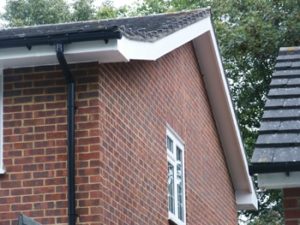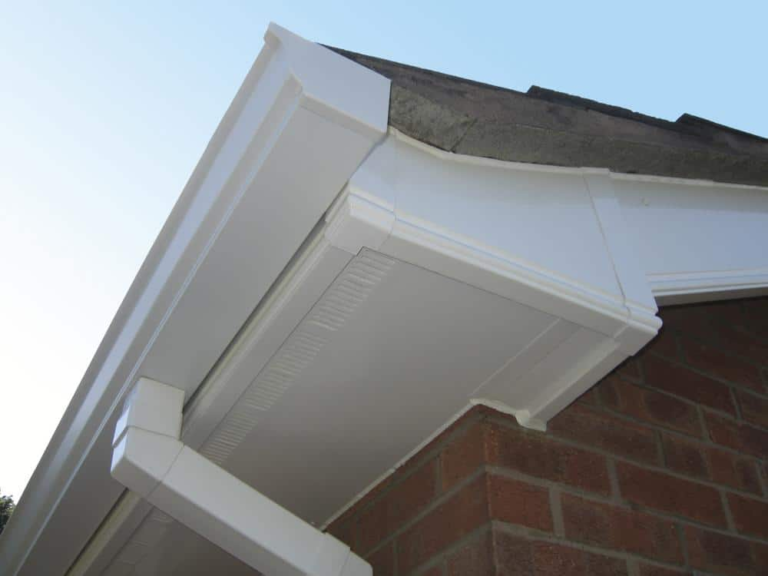
Fascia And Soffit
Add a review FollowOverview
-
Founded Date Marzo 15, 1901
-
Sectors Accounting Finance
-
Posted Jobs 0
-
Viewed 95
Company Description
Soffit Replacement Techniques To Simplify Your Daily Lifethe One Soffit Replacement Trick That Everyone Should Be Able To
Soffit Replacement: A Comprehensive Guide
Soffits play a vital role in the general health and visual appeals of a home. Placed below the eaves of a roofing, they supply ventilation and contribute to the structural stability of the building. With time, nevertheless, soffits can become broken or deteriorate due to numerous factors, requiring their replacement. This short article provides a thorough check out soffit replacement, the materials involved, the process, and answers to regularly asked concerns.

Understanding Soffits
Soffits are the visible surface areas that connect the exterior of the house to the roof overhang. They are often made from products such as wood, vinyl, or aluminum. Their primary functions include:
- Ventilation: Soffits permit proper air flow in attics, preventing moisture buildup and minimizing the danger of mold and structural damage.
- Defense: They shield rafters, beams, and other components of the roof from the aspects.
- Aesthetic Appeal: Soffits contribute to the visual elements of a home, improving its curb appeal.
 Signs Your Soffits Need Replacement It is necessary for house owners to acknowledge when soffits need replacement. Some common signs consist of:
Signs Your Soffits Need Replacement It is necessary for house owners to acknowledge when soffits need replacement. Some common signs consist of:
- Water Damage: Stains or discoloration may suggest leakages or inadequate ventilation.
- Insect Infestation: Exposure to moisture brings in insects like bees and termites, which can jeopardize the structure.
- Peeling or Cracked Paint: This is typically an indication of underlying wood rot, especially in wooden soffits.
- Swelling or Warping: As products soak up wetness, they might start to warp, needing replacement.
Choosing the Right Material
When replacing soffits, property owners can pick from numerous materials. The most typical choices are:
| Material | Benefits | Downsides |
|---|---|---|
| Wood | Traditional look, simple to paint and stain | Prone to rot, requires regular maintenance |
| Vinyl | Low maintenance, moisture resistant, available in numerous colors | Can become fragile in severe temperature levels |
| Aluminum | Durable, rust-proof, and does not need painting | Limited color choices, can damage easily |
| Fiber Cement | Extremely resilient, fireproof, and low maintenance | Heavier, can be more costly |
The Soffit Replacement Process
Replacing soffits can be a manageable DIY job or a job for experts, depending on the house owner’s skill level and convenience. Here is a streamlined detailed process:
Step 1: Assess the Damage
Before case, it is essential to examine the existing soffits thoroughly. Identify the degree of the damage and identify whether replacement is needed.
Action 2: Gather Materials and Tools
Property owners must gather all required products and tools before starting the project. A normal list consists of:
- Replacement soffit panels (wood, vinyl, or aluminum)
- Caulk and caulking weapon
- Saw or cutting tool
- Drill or screwdriver
- Safety goggles and gloves
- Ladder
Step 3: Remove the Old Soffits
Thoroughly removing the old soffits is vital. Start by separating any trims or moldings around the edges. Use a saw to cut through nails and get rid of the soffit panels.
Step 4: Install Ventilation Baffles (if essential)
Before installing new soffits, check for appropriate ventilation. Install baffles that permit air to flow freely, minimizing the threat of moisture buildup.
Step 5: Install New Soffit Panels
Cut the new soffit panels to the correct size and secure them in location using screws or nails. Be sure to leave areas for vents if suitable.
Step 6: Seal and Finish
As soon as installed, seal the edges with caulk to avoid water seepage. Depending upon the material used, include paint or finish as preferred.

Step 7: Cleanup
After the installation is total, clean the work location and get rid of the old materials properly.
Frequently Asked Questions (FAQs)
Q1: How long does soffit replacement last?A1: The durability of replaced soffits depends on the material used. Vinyl and aluminum soffits can last 20-40 years, while wood usually needs more maintenance and might last 10-20 years. Q2: Can I change soffits myself?A2: Yes, homeowners with basic carpentry skills can carry out a soffit replacement. However, hiring professionals is recommended for intricate installations or larger homes. Q3: How much does soffit replacement cost?A3: The cost normally ranges in between ₤ 6 to ₤ 30 per direct
foot, depending upon the material chosen, labor costs, and the
size of the job. Q4: What types of soffit ventilation are available?A4: Options consist of gable vents, soffit vents, and constant soffit vent systems to
ensure appropriate airflow in attics. Soffit replacement is
a vital home maintenance job that can considerably affect a property’s integrity and look. Homeowners need to stay alert for signs
of deterioration and think about replacement options that best match their requirements and budgets. By picking top quality products and following the proper installation procedures, they can make sure that their homes remain well-ventilated and aesthetically appealing for years to come. Whether going with a DIY technique or employing a professional, understanding the procedure makes for a smoother and more successful soffit replacement experience.


